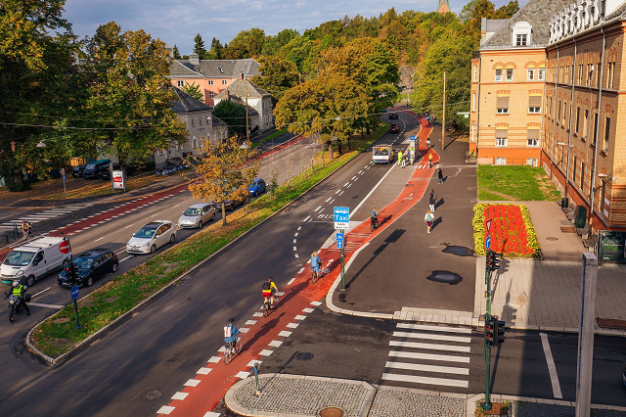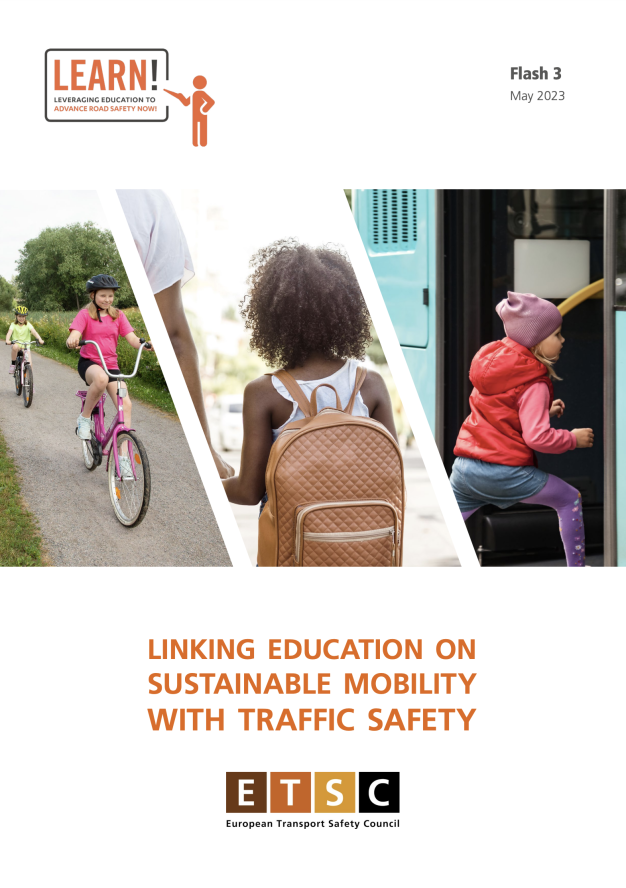
Better education needed for European children on road safety and mobility – report
Streets which surround schools have to be made safer for pedestrians and cyclists if active and safe mobility is to be encouraged among children, says a new report from a European alliance of road safety champions.
Educational curriculums should also include lessons on moving around safely, and sustainably, according to the European Transport Safety Council (ETSC), the Flemish Foundation for Traffic Knowledge (VSV) and the charity Fundación MAPFRE.
‘Real and perceived safety profoundly affects modal choice’, especially in relation to walking and cycling, the most sustainable modes of travel, says the report, which also highlights safety fears as being a major barrier to the uptake of cycling. It adds, however, that a shift away from private motor vehicles could significantly improve road safety in dense urban areas.
And one of the key messages of the LEARN! Flash 3 report is that getting children and youngsters out of cars and onto bikes will make them healthier and live longer. The LEARN! project is about improving education around traffic safety and mobility across Europe by providing the information, tools and resources that education providers can work with, plus policy recommendations for cities and municipalities.

‘The LEARN! project is about improving road safety education’
It has previously set out 17 recommendations that all European countries should implement to ensure that everyone – particularly children – received good quality education on this important issue. These recommendations are grouped amongst five core principles:
- Ensure the right to traffic safety and mobility education (4)
- Engage and support schools (4)
- Ensure high quality education (5)
- Facilitate framework conditions (3)
- Involve all relevant stakeholders (*1)
This latest report also follows the Flash 1 & 2 editions, which set out the impact of COVID on traffic safety and mobility education, and the role of education in reducing road deaths among children in Europe. Both can be accessed here.
The authors of FLASH! 3 say that while a significant shift from car use to walking and cycling risks an increase in road deaths and injuries, they add that the key to healthier lives that combine with safer roads is to encourage more walking and cycling at the same time as introducing new measures to improve the safety of pedestrians and cyclists.
The report puts the spotlight on how education on traffic safety and sustainable mobility can be linked and supported to make sure that children receive high-quality education which teaches them to move around safely and sustainably.
“There is an increasing recognition at local, as well as national and EU level, that boosting the levels of sustainable mobility – and in particular the modes of transport: walking and cycling – can play an important role in overcoming many of these challenges,” says the report.
‘Schools and municipalities can do more to promote safe mobility’
Schools and municipalities, it adds, can also do more outside of formal education to promote safe and sustainable mobility. “They could implement and/or advocate for measures that would improve both the real and perceived safety of roads near the school, such as 30km/h zones and school streets, which is important for the uptake of active modes of transport.
“(They) should also encourage parents to walk and cycle with their children to school, which comes with a range of benefits including for the environment, the child’s physical and mental health, and the development of their road safety schools.” ‘Bike buses’, which are growing in popularity, are also highlighted as an alternative to using motorised transport to travel to and from school.
And in a clear message to councils and city leaders, it adds that ‘From a policy point of view, it makes sense to integrate sustainable mobility and road safety measures, including education, to encourage the use of active transport modes by children and youngsters, while at the same time increasing their safety as vulnerable road users’.
An expert panel put together the report, with input coming from road safety representatives and champions in Austria, Portugal, Spain, Greece, Denmark, The Netherlands, Norway, United Kingdom, Finland, Czech Republic and Belgium.
Click here for the full report, LEARN! Flash 3: Linking Education on Sustainable Mobility with Traffic Safety. from the ETSC website.




